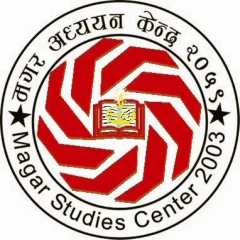Hutt, Michael (Editor) (2004). Himalayan ‘People’s War’: Nepal’s Maoist Rebellion. London: C. Hurst & Co. (Publishers) Annotation by: Dr. Govind Prasad Thapa
This book is on Nepal’s insurgency launched by Maoist. It has five parts. Part I is about the political context, part two about the Maoists and the people, the third part covers geographical and comparative perspectives, fourth last part are about after-words and appendixes. There are thirteen essays including introduction. Both, native and foreign writers have contributed to this work. This book gives different perspectives of the insurgency that battered the country. Marie LecomteTilouine has contributed an essay “Ethnic demands within Maoism: Questions of Magar territorial autonomy, nationality and class.” She opens her essay with the statement, “It has become a commonplace to associate the Maoist guerillas in Nepal with the Magar ethnic group.” In her essay, she examines “both the references to Maoism that appear in Magar ethnic and ethno-Marxist literature.” She observed that “Magars are extremely numerous in the Nepali police and army among whom especially the policemen, along with their families, have been targeted by the Maoists and are thus opposed to their movement.” This book serves different views on the insurgency with varied background and perspectives of contributors.
Kansakar, Vidya Bir Singh. (1982). Emigration, Remittances and Rural Development. Kathmandu: Centre for Economic Development and Administration, Tribhuvan University. Annotation: Dr. Min Shris
This book contains five chapters, introduction, land population & social structure, economy remittances & rural development, recruitment of Nepalese in foreign armies: causes and implications, and conclusion. Primarily focused on migration, this book is based on a study conducted in Gulmi and Syangja districts. It examines migration for recruitment in a foreign army and the remittances migrants send home. The study focuses on the recruitment of the Gurungs and Magars in foreign armies and the importance of remittances on the social and economic aspects in these rural areas. The book explores the social and political context of Nepali recruitment in foreign armies and points out the hardship suffered by the returnees who would find it hard to sustain their livelihoods in the absence of pensions.
Karki, Ram Bahadur (2069 BS). Ancient and Medieval History of Nepal. Swadesh Prakashan Pvt.Ltd.Bagbazar. Annotation by: Gupta Bahadur Rana
Karki (2069 BS) has included Magars into indigenous people group with Khas ethic group. He describes ‘Khan’ word and its historical derivation and adoption (p. 362). He also argued that, Magars other ethic words come from the Aryan Sanskrit word and become 12 panthi Magars and 18 panthi Magars (p.363) and similarly 26 sub-clan khas, 4 sub-clan Gurnung and 16 sub-clan Gurungs etc. Mainly his argument is all the ethnic groups specially who were ruler in the history of Nepal are all Khas (p. 363). He has also described Baise and Chaubise states of medieval era and Magars kings and kingdoms, among them. He describes Balihang king and kingdom which belongs to Magar ethnic group (p. 377). His main argument is most of the rulers of the history were from the Khas ethnic group of Nepal.
